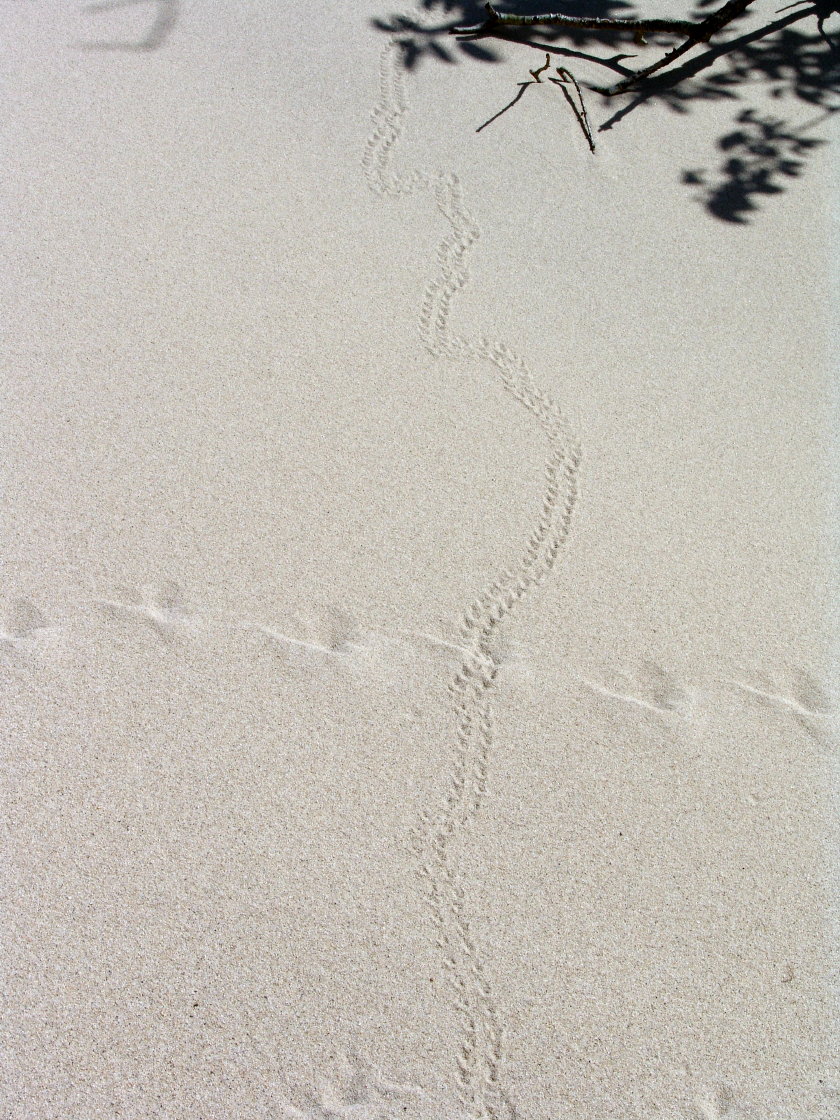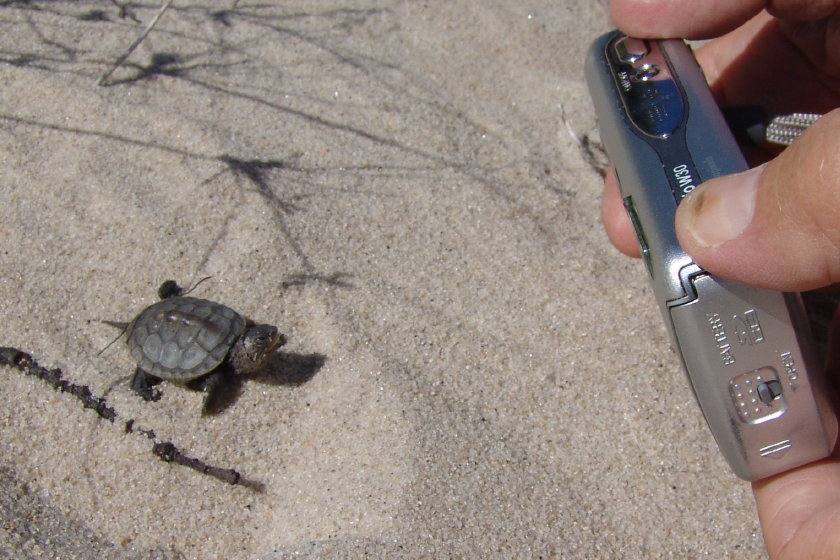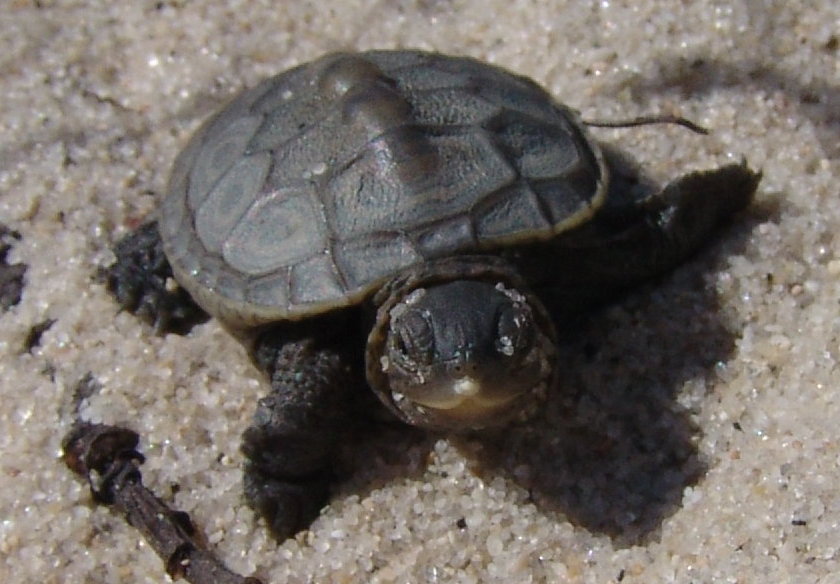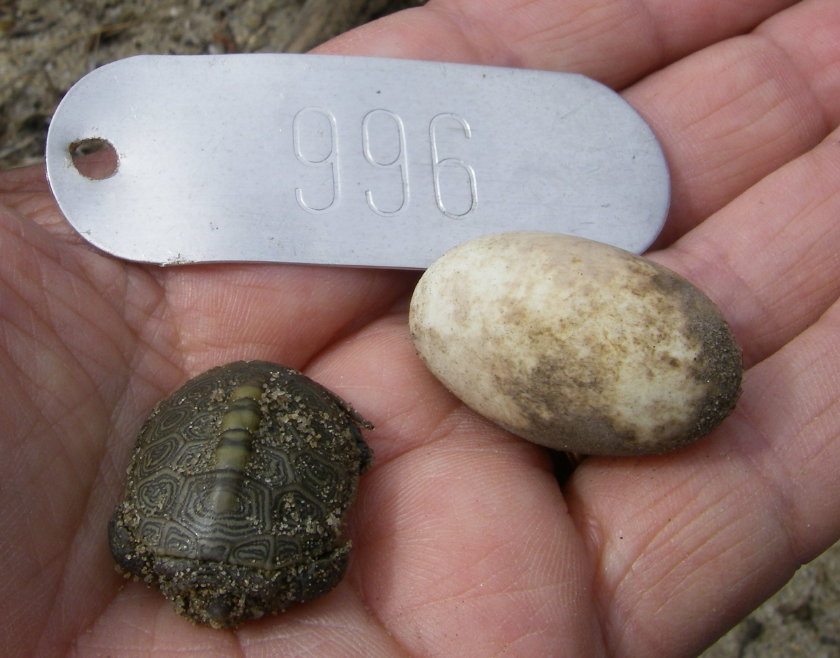Skill brings you to the precise location where an extraordinary event MAY occur. But luck ensures that you reach that spot at the once-in-a-lifetime moment when an extraordinary event DOES occur. Finally, patience permits you to dwell at the right spot at the right time for that exact instant when everything comes together and a miracle happens. Watch how these factors brought us to the perfect dune emergence sequence on Saturday.
Hatchling Slaloms Down High Dune
Experience keyed us to a certain set of dunes that lay within a dense diamondback terrapin nesting site.  Skill enabled us to recognize a series of fresh hatchling tracks that crisscrossed the dune face like trolley lines (see above). But then luck kicked in. It showed us a stream of tracks that appeared to converge on a single concavitiy in the dune slope (see below).Â
Tracks Converge at Possible Emerging Terrapin Nest
Patience gave us to time to wait and to watch the concavity without barging into the scene and disturbing the ongoing miracle of birth. Seconds ticked by, then minutes, and finally a head poked through the shifting sand … and another one. Hatchlings popped like slow-motion popcorn under the heat of the midday sun.
Hatchlings Emerge and Scramble to Safety
Spying so many tracks when we arrived, we had hoped that perhaps one hatchling might be left to emerge. As luck would have it, ten babies remained in the nest and they popped out in ones and twos over the next hour. As a whole, the event proved our very best documented dune emergence sequence as a beautiful miracle unfolded before our eager camera lens.
Click Here to View Video in High Quality
Best Terrapin Hatchling Emergence Sequence









